The Ultimate Travel Bucket List for 2025: Top Destinations We're Dreaming of Exploring
- Alanna Gabbett

- Nov 20, 2024
- 32 min read
Updated: Mar 26
Traveling opens up a world of incredible experiences. What better way to spark your wanderlust than by crafting the ultimate bucket list for 2025?
In this article, we share our top ten captivating destinations ideal for families seeking adventure, culture, and unforgettable memories. Pack your bags and get ready—we're about to embark on a journey to undiscovered destinations and hidden treasures.
In this article, we explore our top bucket list destinations for 2025!
For more destination inspiration, check out some of our other guides:
Unmissable Adventures: The Ultimate Bucket List Items for Every Month of the Year!
Affordable Destinations for Budget Travelers: Exploring 5 Eastern European Locations
Exploring Europe: The Perfect City Break Pairings for Two Countries in One Trip
The Ultimate Travel Bucket List for 2025: Top Destinations We're Dreaming of Exploring
This blog may contain affiliate links. If you make a purchase through these links, I may receive a commission at no extra cost to you. I only share products and services that I personally trust and recommend. Thanks for supporting this site!
Georgia
The Hidden Gem of Europe
The country of Georgia is a hidden gem in the Caucasus region, offering a unique blend of stunning landscapes, rich history, and vibrant culture. From the towering Caucasus Mountains to the scenic vineyards of the Kakheti region, Georgia is a paradise for nature lovers and adventure seekers. Its ancient cities, like Tbilisi, are filled with charming cobblestone streets, historic churches, and fascinating landmarks. Georgia is also renowned for its warm hospitality, welcoming locals, and incredible cuisine, making it an unforgettable destination for those seeking both cultural exploration and outdoor adventure. With its mix of medieval traditions and modern vibrancy, Georgia provides a truly authentic travel experience.

Fun Facts:
The capital of Georgia is Tbilisi - pronounced <Te-BIL-Lee-See>
The official currency in Georgia is the Georgian Lari.
Georgia is the birthplace of wine.
Georgia is home to the Caucasus Mountains, Europe's highest mountain range.
Georgia is also home to Bochorna and Ushguli, Europe's highest continually inhabited settlements.
You can find the world's deepest cave here, Veryovkina Cave.
The country has 12 different climate zones!
Over 40% of the country is covered in forest.
The Georgian language is recognized as one of the oldest and most unique in the world, containing its own alphabet of 33 letters.

How to Get There:
Tbilisi International Airport (TBS) serves as the main gateway and connects with various international routes. The airport is located about 17km outside the city.
To get from the airport to the city center you can take a public bus, a taxi, or book a private transfer.
Getting Around:
Public transport in and around Georgia is relatively affordable and accessible, especially in the capital, Tbilisi, and other major cities.
Buses: In Tbilisi and other cities like Batumi, Kutaisi, and Zugdidi, minibuses (known locally as "marshrutkas") are a common and inexpensive way to get around. They operate on set routes, although schedules can be flexible. Larger buses are also available for intercity travel.
Metro: Tbilisi has a simple yet efficient metro system with two lines that connect key parts of the city. The metro is a convenient option for avoiding traffic, especially during peak hours.
Taxis & Ride-Sharing: Taxis are widely available in Tbilisi and other cities. While taxis are metered, it’s a good idea to confirm the fare beforehand or use ride-sharing apps like Bol and Yandex.Taxi, which are popular in Georgia.
Trains: Georgia’s train network connects Tbilisi with other cities and regions, with overnight trains available to destinations like Batumi on the Black Sea coast and Zugdidi near the Caucasus Mountains.
Marshrutkas (Minivans): For intercity travel, marshrutkas are a popular and budget-friendly option. These minivans operate between towns and cities, though they can be crowded, especially during busy travel times.
Car Rentals: Renting a car is a popular choice for exploring Georgia’s rural areas, as public transport may be less frequent in more remote regions.
Best Time to Visit:
Spring (March to May) and Fall (September to November) present ideal conditions with mild temperatures and beautiful scenery. During these months, Tbilisi sees a 20% increase in tourist activity, making it perfect for families.
Alternatively, you can choose to visit during the summer months (June - August) to experience the warmer temperatures while exploring the numerous beaches along the western coast on the Black Sea.
And if you're an avid skier, don't underestimate a Winter (December - February) visit. Georgia contains 4 main ski resort towns and has great options for affordable skiing and winter activities.
Foods to Try:

Traditional Georgian cuisine is rich in flavors and ingredients, reflecting the country’s diverse landscapes and cultural influences. Central to Georgian cooking are fresh herbs, vegetables, meats (particularly lamb, beef, and chicken), and unique spices like coriander and saffron.
A staple dish is khachapuri, a cheese-filled bread that varies regionally, with the most famous being the Adjarian style, topped with an egg and butter. Another popular dish is khinkali, large dumplings filled with spiced meat, often served with a sprinkle of black pepper.

Shashlik, skewered and grilled meat, is commonly enjoyed at gatherings, while pkhali, a variety of vegetable pâtés, is a popular appetizer. Lobio, a hearty stew made from kidney beans, and chakapuli, a lamb stew cooked with tarragon, are also traditional favorites.
Georgian wine, one of the world’s oldest wine-making traditions, accompanies meals, completing the country’s culinary experience.
Top Attractions and Things to Do:
Tbilisi: Explore the charming Old Town with its colorful houses, take a thrilling cable car ride, and visit the famous sulphur baths—perfect for a family day out.
Wine Tasting in Kakheti: Book a vineyard tour at one of the family-friendly wineries. Many offer grape juice tastings for kids and enlightening vineyard experiences for adults.
Marvel at the Gergeti Trinity Church: Sitting at 2,000 meters above sea level over the town of Kazbegi, it's a breathtaking sight to see.
Enjoy the many hiking trails: A haven for nature-loving families, Georgia features hiking trails suitable for all ages. Explore trails at Kazbegi, Borjomi-Kharagauli, Algeti and Trialeti, Mtirala, and Vashlovani National Parks.
Sunbathe and swim in the Black Sea: Georgia boasts around 300 km of coastline with the Black Sea, making it a perfect summer getaway for swimming.

Gergeti Trinity Church
Tokyo:
The Futuristic City of Lights
Tokyo is Japan's vibrant capital, known for its modern skyscrapers, historic temples, and sprawling parks. It blends the traditional with the futuristic seamlessly.
The city is well-suited for families, emphasizing cleanliness and safety while facilitating convenient public transportation. Additionally, it offers numerous attractions suitable for children, including museums, restaurants, parks, and theme parks such as Disney Tokyo and DisneySea.
Fun Facts:
The official currency in Japan is the Japanese Yen.
Tokyo has hundreds of themed cafes, dining establishments, and even a Robot Hotel.
Vending machines are elite, offering the opportunity to purchase just about anything while you're on the go.
Tokyo is the home of the world's busiest pedestrian crossing, Shibuya Crossing.
The Tokyo Skytree was inspired by the Eiffel Tower in France.
Tokyo is home to four national parks.
How to Get There:
Tokyo is accessible via two major airports: Narita International Airport (NRT) and Haneda Airport (HND), both providing excellent international connections. Getting from the airport to the city center is a breeze, with a selection of transport options ranging from trains and buses to taxis and private transfers.
Getting Around:
Public transport in Tokyo is extensive, efficient, and easy to navigate, making it one of the best ways to get around the city.
Trains and Subways: Tokyo has an extensive network of trains and subways, operated by companies like JR East and Tokyo Metro. The Yamanote Line is particularly important, as it loops around the city center and connects major neighborhoods. The subway system is well-marked in English and covers areas not served by trains.
Buses: Tokyo's bus system is less commonly used by tourists, but it’s another option for getting around, especially for areas not covered by the train network. Buses accept payments via contactless cards or cash.
Taxis: Taxis are widely available but can be more expensive than public transport. They are metered and can be hailed on the street or booked by phone. Uber also operates in Tokyo.
Trains to Other Cities: For traveling outside Tokyo, the Shinkansen (bullet train) is the fastest and most convenient option, connecting Tokyo to major cities like Kyoto, Osaka, and Hiroshima.
IC Cards: Suica and Pasmo cards are rechargeable contactless cards that can be used for trains, subways, buses, and even purchases at vending machines and convenience stores, offering a convenient and cashless way to travel.
Best Time to Visit:
Spring (March to May) is famous for cherry blossoms, while Fall (September to November) showcases colorful foliage, attracting millions of visitors each year.
Avoid the warm summer months of June to August as temperatures can reach 25 - 30 degrees Celsius (77-to-86-degree Fahrenheit), which does not equal a fun time walking around with kids.
Foods to Try:

Introduce kids to sushi, ramen, and mochi. Consider visiting themed cafés, such as a cat café or a robot café, for a unique dining experience that will entertain young ones. The options are endless and you will find many unique places to explore.
Japanese cuisine is renowned for its emphasis on fresh, high-quality ingredients and delicate flavors. A few must-try dishes include sushi, where vinegared rice is paired with fresh fish or seafood, often enjoyed at conveyor-belt sushi spots or high-end restaurants. Ramen, a hearty noodle soup, comes in many regional variations, from the rich, pork-based tonkotsu to the soy-flavored shoyu ramen. Tempura, lightly battered and deep-fried seafood and vegetables, is another popular dish, typically served with dipping sauce. For something more indulgent, katsu (breaded and fried cutlets, often pork or chicken) served with rice and cabbage is a beloved comfort food. Lastly, takoyaki (octopus-filled dough balls) and okonomiyaki (savory pancakes with various fillings) are iconic street foods that capture the essence of Japan’s casual food culture.
Tokyo is also recognized for having the most Michelin stars in the world, so make sure to check out the fine dining options as well.
Top Attractions and Things to Do:
Tokyo Disneyland and DisneySea: These magical parks promise endless fun for families and host over 17 million visitors each year. The bonus is that even after the cost of a flight, its likely you will still pay less than visiting the United States equivalents.
Ueno Park: This expansive park hosts museums, a zoo, and stunning cherry blossoms, making it perfect for a full day outdoors.
Shibuya Crossing: Experience the buzz of one of the busiest pedestrian crossings worldwide; it’s an Instagram-worthy moment that kids will love. Just be safe when crossing the road.
Visit Iconic Landmarks: Explore Tokyo's famous attractions, including the Tokyo Tower, Tokyo Skytree, and the ancient Senso-ji Temple in Asakusa. You can also check out the tranquil Meiji Shrine surrounded by lush greenery.
Experience Tokyo's Unique Cuisine: Tokyo is a food lover’s paradise. Try sushi at the famous Tsukiji Outer Market, savor ramen in Ramen Street at Tokyo Station, or enjoy a quirky, themed café, like a cat café or a robot café.
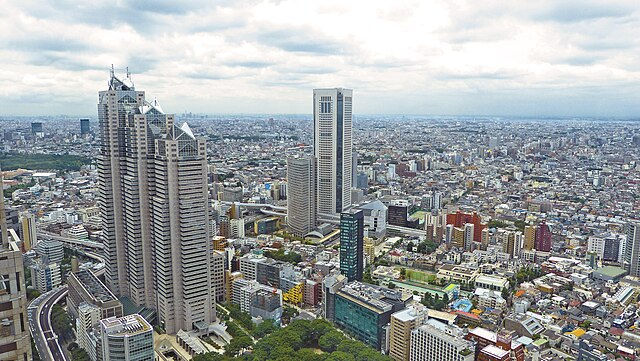
Oman
The Arabian Playground

Oman is a captivating travel destination known for its stunning natural landscapes, rich cultural heritage, and warm hospitality. From rugged mountains and vast deserts to pristine beaches and lush wadis, Oman offers diverse scenery that appeals to nature lovers and adventure seekers alike. The country boasts a fascinating history, visible in its forts, ancient towns, and vibrant souks, alongside a blend of modernity in cities like Muscat. Oman’s commitment to preserving its traditions while embracing modern development creates a unique travel experience that is both authentic and welcoming, making it an ideal destination for those seeking both adventure and culture.
Fun Facts:
The official currency of Oman is the Omani Riyal.
Oman is the oldest independent state in the Arab world.
Oman has 5 UNESCO World Heritage Sites.
The country consistently ranks as one of the safest in the world.
The Mutrah Souk located in the capital of Muscat, is one of the oldest markets in the world.
Oman is an important turtle nesting site, seeing 5 of the world's 7 species of sea turtle.
Oman is also the world's largest producer of Frankincense.
Wild camping is completely legal in Oman so you can watch the stars while camping at the beach, desert, or national parks.
How to Get There:
Muscat International Airport (MCT), located in the north of the country, welcomes travelers from various countries, offering many flight options. The airport is around 35km from the city center and the easiest way to reach the center is a 40-minute bus ride.
Another option is Salalah International Airport (SLL) which is located in the extreme south of the country and remains the second major flight hub in the country. This airport is only 10km from the city center and is easily reached on a 15-minute bus ride.
Getting Around:
Public transport in Oman is limited but improving, especially in urban areas like Muscat.
In Muscat, the capital, the most common form of public transportation is the bus system, operated by Mwasalat. The buses are affordable and connect key areas within the city and to nearby towns, though the network can be somewhat sparse compared to other major cities.
Taxis are widely available in Muscat and other cities, with white taxis being the most common. They can be flagged down on the street or pre-booked by phone. Some taxis may not have meters, so it’s advisable to agree on a fare before starting the journey. Ride-sharing services like Uber and Ola also operate in Muscat.
For longer journeys or travel between cities, intercity buses operated by Mwasalat provide services between Muscat and other key cities like Salalah, Nizwa, and Sohar. These buses are relatively inexpensive but can be less frequent.
Renting a car is a popular option for tourists, as it offers more flexibility to explore Oman’s natural beauty, including remote areas, desert landscapes, and mountain regions. The road network in Oman is generally well-maintained and easy to navigate.
Best Time to Visit:
From October to April, the weather is cooler, offering a pleasant experience for sightseeing and outdoor activities. Daily temperatures range from 15 to 30 degrees Celsius (60 to 85 degrees Fahrenheit).
The period from April to May remains the best time for budget travelers, as prices tend to be lower.
June to September is ideal for turtle-watching and indoor activities in the northern part of the country. In Salalah, this marks the Khareef (rainy season), which brings cooler temperatures and transforms the area into a lush, green oasis.
Foods to Try:
Savor Omani delicacies such as Shuwa (slow-cooked lamb) and Halwa (sweet dessert), which children often find deliciously appealing, or try traditional Qahwa (coffee). Common ingredients used in local dishes include rice, fish, meat, spices, tomatoes, and onions. If you're feeling adventurous, you can also try some camel meat, which is popular in many regions of the country.
Top Attractions and Things to Do:
Nizwa Fort: A fun yet educational outing, this fort provides insights into Oman’s rich history while allowing children to explore its impressive architecture.
Jebel Shams: The highest mountain in Oman, often referred to as the Grand Canyon of the Middle East. Jebel Shams boasts many hiking trails and beautiful viewpoints perfect for watching the sunrise or sunset.
Wahiba Sands: Book a family camel ride or try sandboarding—both activities accommodate all ages and provide lasting memories. Here you will find numerous desert resorts, ranging from budget-friendly tents to luxury campsites equipped with pools.
Muscat: Explore the Royal Opera House and visit the local souk, where families can find unique crafts and aromatic spices.
Daymaniyat Islands: Located just off the coast of Oman, these islands are the perfect day trip from Muscat to enjoy snorkeling, diving, sunbathing on beautiful beaches, and even swimming with turtles.

Omani Camels in Wahiba Sands Desert
Madeira
The Stunning Island Paradise
Madeira is a stunning Portuguese archipelago known for its year-round mild climate, dramatic landscapes, and rich cultural heritage. Often referred to as the "Island of Eternal Spring," Madeira offers lush, green mountains, rugged coastlines, and charming villages. It's a paradise for outdoor enthusiasts, with opportunities for hiking along scenic levadas (irrigation channels), exploring volcanic caves, and enjoying whale watching. The island also boasts beautiful gardens, historic sites, and a vibrant food scene, making it an ideal destination for nature lovers, adventure seekers, and those looking for a relaxing escape.

Fun Facts:
The official currency in Madeira is the Euro.
Madeira is an archipelago of 4 island, of which 2 are inhabited.
Madeira is actually closer to Africa than it is to Europe, being 520 km from the coast of Africa and 1,000 km from the European continent.
It is the birthplace of famous footballer (American Soccer), Cristiano Ronaldo.
The sea temperature remains around 19 degrees Celsius (66 degrees Fahrenheit) year-round, making it perfect for swimming, even in December.
They have an amazing New Year's Eve fireworks display, earning the Guinness World Records title of World's Largest Fireworks Display in 2006.
How to Get There:
Madeira Airport (FNC) connects travelers with major European cities via numerous airlines. The international airport is only about 20 km from the city center and an easy 30-minute bus or taxi ride.
Getting Around:
Public transport in Madeira is relatively limited but efficient for getting around the island, especially in more urban areas.
Buses: Local Buses -The main form of public transport on Madeira is the bus system, operated by Horários do Funchal, which connects major towns and tourist spots within Funchal (the capital) and other areas like Santa Cruz and Câmara de Lobos.
Intercity Buses -For travel between towns and rural areas, buses are available, though services may be less frequent in remote regions.
Taxis & Ride-Sharing: Taxis are widely available in Funchal and major towns, offering a convenient option for short trips or airport transfers. Ride-sharing services like Uber are also available in some parts of the island.
Car Rentals: Renting a car is the most popular and flexible way to explore Madeira, especially for reaching remote villages and scenic viewpoints. The island’s road network is well-maintained but can be winding and steep.
Cable Cars & Funiculars: Madeira features several cable cars and funiculars in Funchal, offering not only a mode of transport but also scenic views. The Funchal Cable Car takes visitors to the famous Monte Palace and offers panoramic views of the city.
Ferries: Ferries are available to travel between Madeira and the nearby Porto Santo Island, a popular option for day trips.
Best Time to Visit:
Madeira has a subtropical climate with hot summers and very mild winters. This makes it a great place to visit year-round.
With that said, May to September is typically warmer and drier, perfect for swimming in the many beautiful beaches around the island.
October to April remains the wet season, with temperatures a bit cooler. This may be a preferred time for hiking some of the famed trails here - if you can time them between rain showers.
Additionally, spring (March to June) is ideal for blooming flowers and mild weather, attracting many outdoor enthusiasts.
Foods to Try:

Taste the famous Madeira wine, fresh seafood, and Bolo do Caco (potato bread). Children will also love sampling the local tropical fruits, such as mangoes and papayas.
Seafood remains a popular local option, with many dishes containing Scabbard fish, tuna, or limpets.
Top Attractions and Things to Do:
Rent a car: Explore the island by renting a car to discover beautiful beaches, hidden waterfalls, natural hot springs, and admire expansive mountain landscapes.
Pico de Areiro: Hike to this famous and well-known viewpoint to watch a stunning sunrise. This is the third highest mountain peak in Madeira at 6,000 feet above sea level.
Levadas Hikes: These family-friendly walking trails lead to stunning waterfalls and provide varying levels of fitness, making them suitable for the whole family.
Madeira Theme Park: An exciting destination for a day full of rides, shows, and interactive exhibits tailored for family enjoyment.
Funchal: Check out Madeira's vibrant capital city, which is the 6th most populated city in Portugal. Visit the Botanical Gardens or enjoy the exhilarating cable car ride to Monte, where the views are simply breathtaking.

New Zealand
The Adventurer's Paradise
New Zealand is a stunning travel destination known for its diverse landscapes, from lush rainforests and pristine beaches to dramatic mountains and rolling hills. Whether you're seeking adventure, relaxation, or a deep connection with nature, New Zealand offers it all. The country is a paradise for outdoor enthusiasts, with opportunities for hiking, bungee jumping, skiing, and exploring its famous fiords and national parks. Known for its warm and welcoming people, New Zealand also boasts a rich cultural heritage, vibrant cities like Auckland and Wellington, and a thriving food scene, making it a must-visit destination for any traveler.

Fun Facts:
The official currency is the New Zealand Dollar.
The Kiwi bird is a national symbol.
This country boasts the world's longest place name for one of its towns.
Sheep outnumber humans 5:1.
Manuka honey originates here.
Home of the world's first commercial bungee jump in 1988.
Home of the Māori - the indigenous people of New Zealand, who proudly celebrate traditions like the haka and ta moko tattoos.
How to Get There:
Auckland Airport (AKL) is the primary entry point, with connections from around the globe. This airport is located on the North Island. The airport is located 21 km from the city center and can be reached by a variety of options, including bus, train, shuttle, and taxi.
The South Island's main point of entry by plane is Christchurch Airport (CHC).
Getting Around:
Public transit in and around New Zealand is diverse, with various options for both urban and intercity travel.
Buses: City Buses - Major cities like Auckland, Wellington, and Christchurch have reliable local bus services, operated by companies like Go Wellington and Auckland Transport.
Intercity Buses - For longer distances, services like InterCity and Newmans Coach Lines connect towns and cities across the country at affordable rates.
Trains: New Zealand’s train network is limited but offers scenic and comfortable travel for tourists. The Northern Explorer and Coastal Pacific routes offer breathtaking views of the countryside, while TranzAlpine is one of the most famous journeys, crossing the Southern Alps.
Ferries: Ferries operate between the North and South Islands (e.g., Interislander), as well as to various islands like Waiheke or Stewart Island. These are an essential way to travel between islands or to explore coastal areas.
Taxis & Ride-Sharing: Taxis are available in cities but are generally more expensive. Ride-sharing apps like Uber and Ola operate in major cities, providing an alternative for shorter trips.
Car Rentals: Renting a car is a popular option for exploring New Zealand, especially for reaching remote or rural areas. New Zealand’s well-maintained road network offers easy access to many tourist hotspots.
Bicycles: New Zealand is bike-friendly, especially in cities like Auckland and Wellington, where bike-sharing services and rental shops are available. Cycling is a great way to explore the local areas.
Best Time to Visit:
Temperatures remain pleasant year-round in New Zealand, with the summer months of December to February offering warmer temperatures ideal for outdoor activities. Daily highs in this period max out around 21 degrees Celsius (70 degrees Fahrenheit).
Spring (September to November) and Fall (March to May) are considered shoulder seasons and are both ideal times to experience the country’s stunning landscapes at slighter lower prices.
March and May are great months for pleasant weather and a great time to experience local festivals, while September and November are great for viewing the blooming flowers and attending foodie festivals.

Foods to Try:
Sample fresh seafood, Lolly Cake (a sweet treat), and don’t forget about the iconic Kiwi fruit, which is enjoyed by kids and adults alike. The country is also known for Hangi - a traditional Māori preparation of meat and vegetables cooked underground with heated rocks and a variety of savory pies and pastries.
Top Attractions and Things to Do:
Hobbiton: A must-see for fans of "The Lord of the Rings," this movie set tour is captivating, offering both fun and educational experiences for visitors.
Rotorua: Explore geothermal parks, enjoy stunning landscapes, and visit a traditional Māori village for exciting cultural activities
Milford Sound: Head down to the South Island to experience the beauty of the iconic Milford Sound in Fiordland National Park. Here you can find numerous hiking trails, boat tours, and even helicopter tours of the stunning landscape.
Queenstown: Known for its adventure sports, families can also engage in gentle hikes and scenic boat rides, making for ever-lasting memories.

Boat Ride Through the Milford Sound at Fiordland National Park
Amsterdam
The City of Canals
Amsterdam is a vibrant and dynamic city that offers a unique blend of history, culture, and modern charm. Known for its picturesque canals, world-class museums, and rich artistic heritage, Amsterdam is a haven for travelers. The city boasts iconic landmarks like the Rijksmuseum, Van Gogh Museum, and Anne Frank House, as well as a lively atmosphere with trendy cafes, eclectic neighborhoods, and a welcoming vibe. With its bike-friendly streets, beautiful parks, and thriving food scene, Amsterdam is an ideal destination for anyone seeking culture, adventure, or relaxation.
Fun Facts:
The official currency is The Euro.
The city is built on 11 million poles to keep it above the water.
Amsterdam has the smallest houses in Europe.
The city boasts over 2500 boathouses.
There are 4 times more bridges in Amsterdam than in Venice, Italy.
Home of the world's only floating flower market.
There are 4 times more bicycles than cars in the city.
This city has the highest museum density in the world.
There are more than 160 coffee shops!
How to Get There:
Amsterdam Airport Schiphol (AMS) is well-connected to many international destinations, serving as the primary airport. The airport is only 11 km from the city center, which is easily accessible through various options such as express trains, buses, and taxis.
The city is also easily visited by various train and bus connections from all over major cities in Europe.
Getting Around:
Public transport in Amsterdam is efficient, convenient, and well-connected, making it easy to explore the city and surrounding areas.
Trams: Amsterdam has an extensive tram network, one of the most popular ways to get around the city. Trams cover most areas, including major attractions like Dam Square, Museumplein, and Vondelpark.
Buses: Buses are available for both local routes within the city and regional routes to surrounding towns. They complement the tram and metro services, reaching areas that trams don’t cover.
Metro: The Amsterdam Metro connects the city center to suburban areas, including Amstelveen and Zuidoost. It's particularly useful for reaching destinations farther out, like the Amsterdam Arena or Zuidas business district.
Ferries: Free ferries operate across the IJ River, connecting Amsterdam Central Station with areas like NDSM Wharf and Amsterdam North. They are popular for both commuters and tourists.
Bikes: Amsterdam is a bike-friendly city, and renting a bike is one of the best ways to get around. The city has an extensive network of bike lanes and bike-sharing programs.
Taxis & Ride-Sharing: Taxis are available but are more expensive than public transport. Ride-sharing apps like Uber are also widely used in Amsterdam.
Best Time to Visit:
Spring (April May), for its tulips and festivals, and early Fall (September), characterized by mild weather, are both great times to visit.
The summer months of June to August tend to be the busiest, attracting larger crowds and higher prices.
Additionally, temperatures during this period will be higher, which may render walking around the city less comfortable; average highs in July can reach 21 degrees Celsius (70 degrees Fahrenheit).
Foods to Try:

Delight in Stroopwafels (thin waffle cookies with syrup) and Herring (raw herring fish, typically served with raw onions).
Kids will enjoy Poffertjes (Dutch Pancakes), especially when topped with fruit or chocolate. And don't forget to try all kinds of cheeses from the various cheese shops throughout the city.
Other local dishes include bitterballen (deep-fried meatballs with mustard) and stamppot (mashed potato and vegetable dish).
Top Attractions and Things to Do:
Vondelpark: This expansive urban park is perfect for picnics, has playgrounds, and hosts open-air concerts that families will love.
NEMO Science Museum: This hands-on museum experience captivates kids with interactive exhibits that blend fun with learning.
Anne Frank Museum: This museum is a permanent exhibition on the life and times of Anne Frank, featuring the building where the Frank family hid during World War II. Keep in mind that this is not recommended for young children.
Bike Around the City: Rent a bike and explore the many beautiful streets around the city, winding around canals and witnessing stunning architecture.
Take a Boat Ride on the Canals: Hop on a canal boat to explore the city from a new perspective, while navigating under some of the 1,200 bridges in the city.
Day Trip to Tulip Fields, Windmills, and the Charming Dutch Countryside: Book a day trip to explore the Holland Windmills, tulips fields, or any of the charming Dutch towns in the countryside. We recommend Get Your Guide for in-depth and organized tours.
Red Light District: A unique part of Amsterdam and a main draw for many tourists. Just keep in mind this is probably not appropriate for children.

Costa Rica
The Rainforest Wonderland
Costa Rica is a top travel destination known for its breathtaking natural beauty, diverse wildlife, and commitment to environmental conservation. From lush rainforests and volcanic landscapes to pristine beaches on both the Pacific and Caribbean coasts, Costa Rica offers something for every type of traveler. The country is a haven for outdoor enthusiasts with activities like zip-lining, hiking, surfing, and wildlife watching. With its friendly locals, vibrant culture, and a strong emphasis on sustainability, Costa Rica provides an unforgettable experience for those seeking adventure, relaxation, or both.
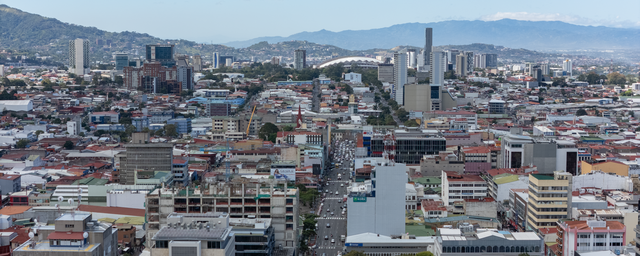
Fun Facts:
The official currency of Costa Rica is the Costa Rican Colon.
The country is a biodiversity hotspot, harboring 5% of the world's biodiversity.
More than one-quarter of the land area is protected as national parks and nature reserves.
The country has over 200 volcanic formations.
Coffee is the main export of the country, with coffee plantations abundant.
Costa Rica is the home of the world's largest butterfly observatory, which spans over 29,000 square feet.
Costa Rica leads in eco-tourism, home to many eco-lodges, wildlife reserves, and tour operators committed to minimizing their environmental impact.
One of the best countries for adventure tourism, including activities such as volcano hiking, zip-lining, white-water rafting, and surfing.
How to Get There:
Juan Santamaría International Airport (SJO) in San José is the main hub for international travelers. The journey from the airport to the city center is around 30 minutes by bus, shuttle, or shared van.
Getting Around:
Public transport in Costa Rica is generally affordable and accessible, with various options for getting around the country.
Buses: The national bus network is the most common and economical way to travel between cities and towns. Major companies like Tica Bus and Transporte MEPE provide intercity routes connecting San José, Liberia, Quepos, and other key destinations. Local buses also operate within cities, though they can be crowded and less frequent in rural areas.
Taxis: Taxis are widely available in cities like San José and Liberia, and are metered for fair pricing. Red taxis are the standard, but Uber is also available in many areas, offering a more flexible and often cheaper alternative.
Shuttle Services: Many tourists opt for shared shuttles or private transfers, especially for travel between the airport and major tourist destinations like Arenal or Monteverde. These services are convenient but typically more expensive than buses.
Domestic Flights: For longer distances, particularly to reach remote areas like the Osa Peninsula or Drake Bay, domestic flights from airlines like Sansa Airlines are available, though they tend to be pricier.
Car Rentals: Renting a car is a popular option for exploring Costa Rica at your own pace, especially for visiting national parks or coastal towns that are less accessible by public transport. However, roads can be challenging, particularly in rural or mountainous areas.
Bicycles: In many tourist areas, bike rentals are available for exploring the local surroundings, especially in places like Tamarindo and Puerto Viejo.
Best Time to Visit:
The temperatures in Costa Rica remain pretty constant year-round - typically between 24 and 29 degrees Celsius (75 - 85 degrees Fahrenheit).
December to April marks the dry season, which is the best time for a beach vacation. With more sun and less rain, it makes it the most popular time for swimming, wildlife viewing, and other outdoor activities. With this said it's also when crowds and prices are highest.
May to November is the rainy season, however the temperatures are still warm and pleasant. Prices and crowds tend to be lower, and the landscapes will be even more green and lush.
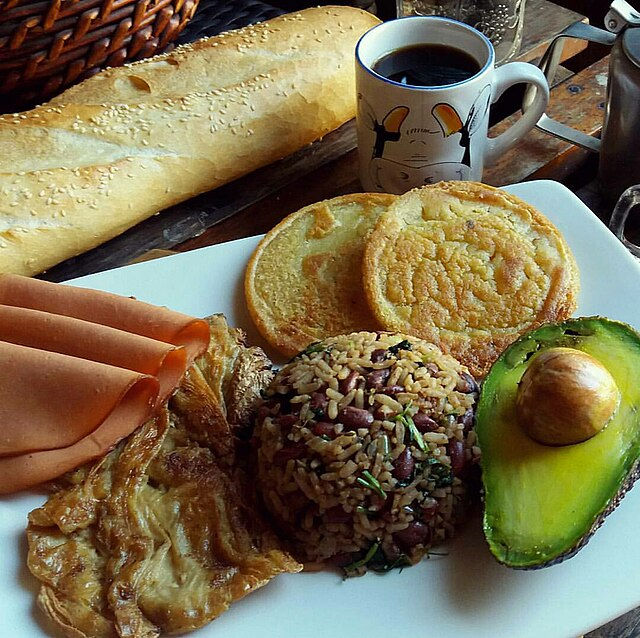
Foods to Try:
Costa Rican cuisine is flavorful, diverse, and deeply rooted in the country’s agricultural and cultural traditions.
Gallo Pinto (rice and beans), Casado (traditional Costa Rican lunch dish consisting of rice, black beans, a protein), and fresh tropical juices are delightful staples for the whole family.
Sopa Negra (black bean soup typically served with hard-boiled eggs and rice), Tamales (a traditional dish made of corn dough (masa) stuffed with a variety of fillings), and fried plantains are also popular choices.
Top Attractions and Things to Do:
Arenal Volcano: Engage in hiking or zip-lining adventures near this stunning volcano, promising thrills for both kids and adults.
Hot Springs: After a hike, relax in the nearby hot springs, such as Tabacon or Baldi, which are naturally heated by volcanic activity.
Monteverde Cloud Forest Reserve: This mystical cloud forest is famous for its rich biodiversity, including the elusive quetzal bird. The reserve has a series of well-maintained hiking trails and hanging bridges.
La Paz Waterfall Gardens: Spend a delightful day enjoying nature trails, mesmerizing waterfalls, and a wildlife rescue center.
Manuel Antonio National Park: This is one of the most popular destinations in Costa Rica, where you can relax on pristine beaches, hike through tropical forests, and spot wildlife like monkeys and sloths.
Coffee Tours: Costa Rica is famous for its coffee, and you can visit a coffee plantation to learn about the production process and sample fresh brews. The Doka Estate and Finca Rosa Blanca offer immersive coffee tours.
Volunteer or Stay at Eco-lodges: Costa Rica offers many opportunities to stay in eco-lodges or participate in conservation efforts. Many travelers engage in turtle nesting protection, reforestation projects, and sustainable farming experiences.
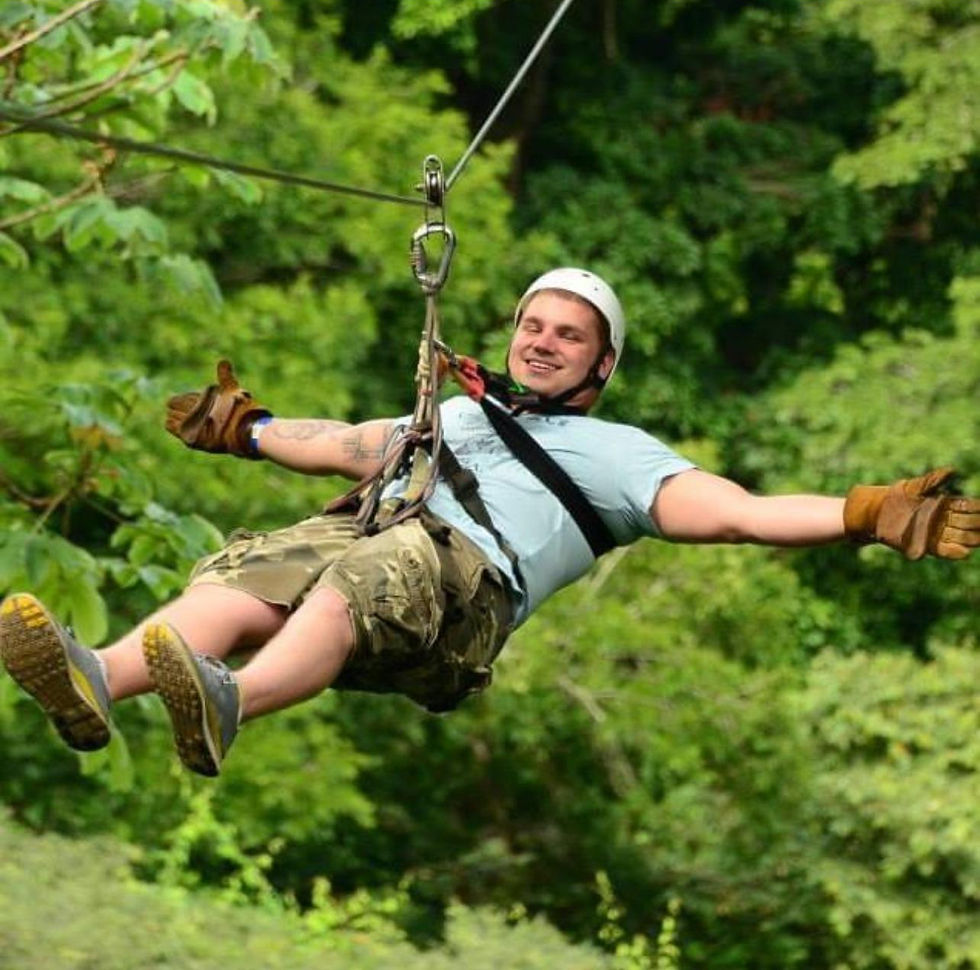
Norway
The Land of the Midnight Sun
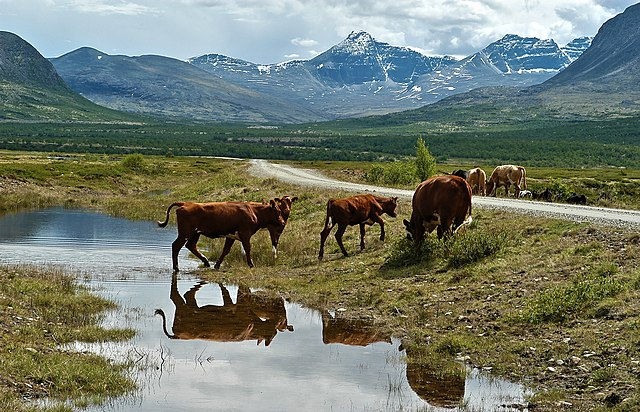
Norway is a dream destination for nature lovers, adventure seekers, and culture enthusiasts alike. Known for its stunning landscapes, including dramatic fjords, towering mountains, and the Northern Lights, Norway offers a breathtaking blend of outdoor beauty and vibrant city life. From the world-famous Geirangerfjord to the charming streets of Oslo and Bergen, there’s something for everyone. Whether you're exploring medieval castles, experiencing the magic of the Midnight Sun, or immersing yourself in Viking history, Norway promises a truly unforgettable travel experience. With its rich culture, welcoming locals, and endless opportunities for exploration, Norway is a top-tier destination that combines natural wonders with unique traditions.
Fun Facts:
The official currency in Norway is the Norwegian Krone.
While Norwegian is the official language, there are two written forms of the language: Bokmål and Nynorsk. In addition, there are many distinct regional dialects that can sound quite different from one another.
Norway is famous for being the home of the Vikings, seafaring warriors and traders who roamed Europe, North America, and beyond.
Norway is home to over 50,000 islands.
Norway has a rich cultural history with influences from Sami traditions (the indigenous people of the Arctic region) and Nordic mythology.
Norway leads the world in electric car adoption. Over half of all new cars sold in Norway are electric.
Norway is one of the world’s leading consumers of coffee per capita.
Norway is renowned for its fjords, which are steep, glacially carved valleys filled with seawater.
How to Get There:
Oslo Gardermoen Airport (OSL) serves as the main international gateway, with numerous flight options.
Getting to the Oslo city center is a breeze and only takes 20 minutes via an express train.
Getting Around:
Public transport in Norway is well-developed, efficient, and easy to navigate, making it convenient for travelers to explore the country.
Trains: The Norwegian State Railways (Vy) operates an extensive train network connecting major cities like Oslo, Bergen, Stavanger, and Trondheim. High-speed and scenic routes, such as the famous Bergen Railway, offer stunning views of Norway’s landscapes.
Buses: Buses are widely used for both local and intercity travel. Nor-Way Bussekspress and other regional bus services connect smaller towns and remote areas, often complementing train routes. In cities, buses are an affordable way to travel short distances.
Trams: Oslo has an extensive tram network, which is an efficient and scenic way to explore the city. Bergen also offers tram services, though to a lesser extent.
Ferries and Boats: Norway's coastal locations and fjords are best explored by ferries and boats. Several ferry routes operate between cities, islands, and across the scenic fjords, such as the ferry from Oslo to Helsinki or Bergen to the surrounding islands.
Taxis: Taxis are available in cities, but they are more expensive than public transport. They can be booked via phone or apps like Uber in some areas.
Car Rentals: Renting a car is a popular option for exploring rural or remote areas, especially the stunning Norwegian countryside. However, parking can be challenging in busy city centers.
Best Time to Visit:
Summer (June to August) is the most popular time to visit Norway due to the long days, mild temperatures, and the famous Midnight Sun in the northern regions. In places like Tromsø and the Lofoten Islands, the sun doesn't set for several weeks, allowing for extended outdoor activities such as hiking, biking, and sightseeing well into the late evening.
Winter (December to February) is ideal for winter sports enthusiasts and those looking to experience the Northern Lights, winter is the ideal season. Norway's mountainous regions offer excellent skiing and snowboarding opportunities, particularly in Hemsedal, Trysil, and Røros. Meanwhile, in the far north, the long winter nights provide prime conditions for viewing the Aurora Borealis.
Spring (March to May) is a quieter time to visit Norway, with fewer tourists and lower prices compared to the summer months. As the snow melts and nature begins to bloom, this is a fantastic time for hiking in the mountains and exploring the countryside.
Fall (September to November) is a fantastic time to visit if you're looking to experience Norway’s autumn foliage and enjoy the tranquility of fewer tourists. The mountains and forests turn into vibrant shades of red, orange, and gold, creating stunning vistas.
Foods to Try:

Norwegian cuisine is rooted in fresh seafood, hearty meats, and simple, flavorful dishes. Must-try foods include smoked salmon, rakfisk (fermented fish), kjøttkaker (meatballs), and lutefisk (dried fish rehydrated in lye).
Brunost (brown cheese) and cloudberry jam are also iconic, while pølse med lompe (hot dog in flatbread) is a popular street snack.
For a taste of tradition, enjoy fårikål (lamb and cabbage stew) or risengrynsgrøt (rice porridge).
Top Attractions and Things to Do:
Oslo: This family-friendly city features museums like the Viking Ship Museum and parks ideal for picnics, making it perfect for little explorers.
Fjord Tours: Enjoy boat trips and hiking in iconic fjord landscapes—ideal for family bonding amidst breathtaking views.
Northern Lights: Kids will be amazed by the natural wonder of the aurora borealis during winter months—consider a night of aurora chasing as a memorable experience.
Visit the Lofoten Islands: Known for their stunning beaches, dramatic peaks, and fishing villages, the Lofoten Islands are perfect for hiking, fishing, and exploring traditional Norwegian culture.
Hike to Preikestolen (Pulpit Rock): One of Norway’s most famous hikes, the trek to Preikestolen offers a stunning view of Lysefjord from a flat, cliff-top platform, making it a must-see for outdoor enthusiasts.
Take a visit to Tromsø: Known for its Arctic adventures, including whale watching and husky sledding, it's the perfect getaway for families to enjoy unique experiences and a great place to chase the Northern Lights.

Malta
The Jewel of the Mediterranean
Malta is a stunning Mediterranean destination known for its rich history, beautiful coastlines, and vibrant culture. With its mix of ancient landmarks, including the UNESCO-listed capital of Valletta, picturesque beaches, and crystal-clear waters, Malta offers something for every type of traveler. Whether you’re exploring ancient temples, relaxing on sandy shores, or diving into the island’s fascinating history, Malta’s charm and unique blend of cultures make it a must-visit destination. With year-round sunshine and easy access to other Mediterranean hotspots, it’s the perfect spot for adventure, relaxation, and discovery.

Fun Facts:
The official currency of Malta is the Euro.
Malta is one of the smallest countries in the world, measuring just 122 square miles (316 km²)
Malta has been ruled by several empires, including the Romans, Arabs, and Knights of St. John. Its strategic location in the Mediterranean led to the construction of numerous forts and castles
Malta is home to the Megalithic Temples of Malta, which are some of the oldest free-standing structures in the world, dating back over 5,000 years (older than the Pyramids of Egypt!).
Maltese is the only official language of the European Union that is written in Latin script and has strong influences from Arabic, Italian, and English, reflecting Malta’s rich cultural heritage.
Malta has been a popular filming location for major films and TV shows, including Gladiator, Troy, and the hit series Game of Thrones, with several scenes filmed on the island’s dramatic landscapes.
Malta boasts over 300 sunny days per year, making it a year-round destination for travelers looking for sunshine and pleasant weather.
In 2018, Valletta was named the European Capital of Culture.
How to Get There:
Malta International Airport (MLA) connects to many European cities, making access convenient for travelers.
The city center is only 8 km from the airport, meaning it doesn't take more than 15 minutes to arrive by shuttle bus, public bus, taxi, or car rental.
Getting Around:
Public transport in and around Malta is relatively easy to use, offering several options for getting around the island.
Buses: The Malta Public Transport network is the main form of public transportation, covering the entire island and its sister island Gozo. Buses are affordable and run regularly, connecting key areas like Valletta, Sliema, St. Julian’s, and the beaches. Night buses are also available in some areas on weekends.
Ferries: Ferries connect the main island of Malta with Gozo and Comino, making it easy to visit these islands. There are also ferries that run between Sliema and Valletta for a scenic and quick ride across the harbor.
Taxis: Taxis are available for private rides, though they are more expensive than buses. Many taxis operate through a taxi meter, or you can pre-book a ride via apps or at designated taxi ranks.
Car Rentals: Renting a car is a popular option for those wishing to explore the island at their own pace, though parking can be limited, especially in crowded areas.
Electric Scooters and Bikes: In some areas, you can rent electric scooters and bikes, which is a fun and eco-friendly way to explore the more touristy locations.
Best Time to Visit:
Spring (April to June) is one of the best times to visit Malta, with mild temperatures ranging from 15 - 24 degrees Celsius (60 - 75 degrees Fahrenheit). The island is lush and green, and the wildflowers are in full bloom. It's perfect for sightseeing, exploring historical sites, and enjoying the outdoors before the summer crowds arrive. Additionally, the sea temperature begins to warm up, making it a good time for swimming and water sports.
Fall (September to November) is another excellent time to visit Malta, especially in September and October, when the weather is still warm, but the summer crowds have started to thin out. The sea is at its warmest, making it ideal for beach activities and water sports. November is quieter, though the weather may be a bit cooler, making it great for a more relaxed and budget-friendly experience.
Summer (July to August) brings hot, sunny weather and it's also the peak tourist season in Malta. Expect crowded beaches, higher prices, and busy attractions. However, if you're looking for vibrant festivals, outdoor events, and lively nightlife, summer could be the right choice, though it can be quite hot for those who prefer milder temperatures.
Winter (December to February) in Malta is mild compared to much of Europe, with temperatures ranging from10 -15 degrees Celsius (50-60 degrees Fahrenheit). This season offers fewer tourists, which means quieter attractions and lower prices. While it's not ideal for beach activities, it's a great time for exploring the island's history, culture, and architecture, as well as enjoying local festivals like Christmas markets.
Foods to Try:
Maltese cuisine blends Mediterranean flavors with influences from Italy, North Africa, and Britain. It emphasizes fresh, local ingredients like seafood, vegetables, and meats.
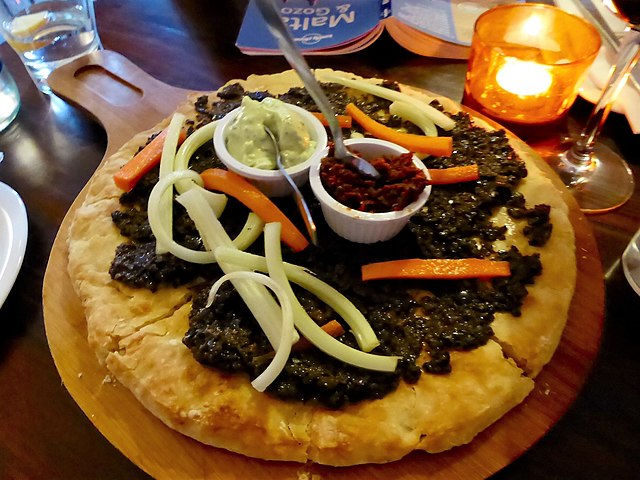
Must-try dishes include fenkata (rabbit stew), pastizzi (flaky pastry filled with ricotta or peas), and bragioli (beef olives). Ħobż biż-Żejt (Maltese sandwich) is a popular snack, while lampuki pie (fish pie) and timpana (baked pasta) highlight Malta’s love for hearty, flavorful meals. For dessert, try imqaret (date-filled pastries) or qagħaq tal-għasel (honey rings).
Top Attractions and Things to Do:
Valletta: Walk through this historic city on engaging family tours that showcase its rich history and architectural beauty.
Gozo Island: Spend a relaxing day at the beach or visit the Azure Window for memorable moments and exciting adventures.
Relax at the Beaches: Malta offers beautiful beaches like Golden Bay and Mellieħa Bay, perfect for sunbathing, swimming, and water sports.
Discover the Megalithic Temples: Malta is home to some of the world's oldest free-standing structures. Visit the Ġgantija Temples on Gozo or Hagar Qim and Mnajdra on the main island to explore these ancient wonders.

Xlendi Bay, Gozo Island, Malta
Morocco
Land of Light

Morocco is a captivating destination that offers a rich blend of history, culture, and natural beauty. From the bustling souks of Marrakech to the serene deserts of the Sahara, Morocco is a country of contrasts, where vibrant cities, ancient medinas, and dramatic landscapes coexist. Visitors can explore historic palaces, sample delicious Moroccan cuisine, and experience the warmth of its welcoming people. Whether you're drawn to adventure, history, or relaxation, Morocco’s unique charm, diverse attractions, and rich heritage make it an unforgettable travel destination.
Fun Facts:
The official currency of Morocco is the Moroccan Dirham.
Morocco is home to Africa's highest mountain, Mount Toubkal, located in the Atlas Mountains.
About one-third of Morocco is covered by the Sahara Desert, the largest hot desert in the world
Home of the oldest university in the world - The University of Al Quaraouiyine in Fes is recognized by UNESCO and the Guinness World Records as the oldest existing, continually operating higher educational institution in the world, founded in 859 AD.
Due to its history as a French and Spanish protectorate, Morocco blends Arab, Berber, and European influences. You’ll see French spoken widely, and Spanish is often heard in northern Morocco.
Morocco is a monarchy, with a king who plays a central role in the country’s politics, culture, and traditions.
How to Get There:
Marrakech Menara Airport (RAK) is a popular international entry point, connecting to various countries. The airport is only 8 km from the city center, which can easily be reached by an 8-minute taxi ride of 20-minute shuttle bus.
Getting Around:
Public transportation in Morocco is diverse and affordable, making it relatively easy to travel around the country.
Trains: The ONCF (National Office of Railways) operates a network of trains connecting major cities like Marrakech, Casablanca, Rabat, and Fes. Trains are comfortable, reliable, and affordable, with both standard and high-speed options like the Al Boraq connecting Casablanca to Tangier.
Buses: Several bus companies, including CTM and Supratours, offer long-distance services connecting cities and towns. Local buses are also available in most cities, though they can be crowded and less reliable.
Taxis: Petite taxis (small, usually for 1-3 passengers) are available in cities and run on meters. Grand taxis (larger shared taxis) are used for intercity travel and typically carry up to six passengers. It's common to share a grand taxi with others heading to the same destination.
Trams: Cities like Casablanca and Rabat have modern tram systems, providing a convenient and affordable way to travel within urban areas.
Motorbikes and Scooters: In some cities, motorbikes and scooters are a popular way to navigate through traffic.
Car Rental: Renting a car is also an option for exploring the country, especially for rural areas or desert regions, but driving conditions can vary, and road signs may not always be clear.
Best Time to Visit:
Spring (March to May) offers mild temperatures, making it perfect for sightseeing and exploring cities like Marrakech, Fes, and Chefchaouen. The landscapes are lush, especially in the Atlas Mountains, and it’s an ideal time for trekking or enjoying the countryside.
Fall (September to November) is another great time to visit with pleasant weather comfortable for outdoor activities like desert tours or hiking, and the summer crowds have thinned out, offering a more relaxed experience.
Winter (December to February) brings cooler temperatures and is ideal for visiting Morocco’s coastal cities like Essaouira and Casablanca. It’s also a good time for desert visits, though nights can be chilly. Skiing in the Atlas Mountains is possible at Oukaimeden.
Summer (June to August) in Morocco can be very hot, especially inland and in the Sahara Desert, with temperatures often exceeding 95°F (35°C). Coastal areas like Essaouira and Casablanca tend to be cooler, but the heat can be intense for outdoor activities. If you’re planning to visit the desert, it’s best to do so in the early morning or evening.
Foods to Try:
Moroccan cuisine is a flavorful mix of Arab, Berber, and Mediterranean influences, known for its aromatic spices and rich stews. Key dishes include tagine, a slow-cooked stew with meat, vegetables, and dried fruits; couscous, steamed semolina served with meat and vegetables; and pastilla, a savory-sweet pastry filled with pigeon or chicken and almonds.
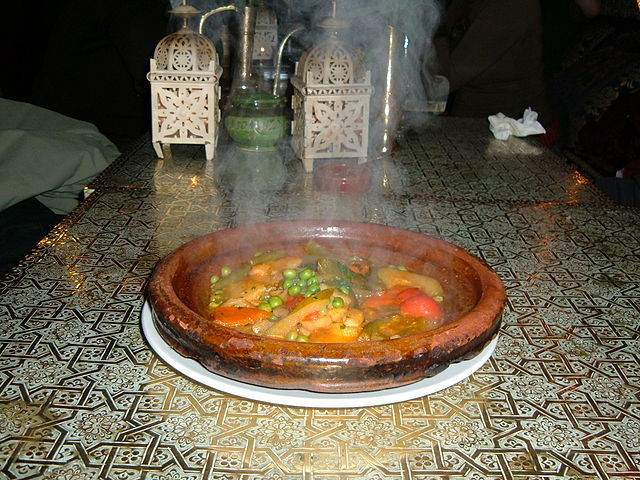
Harira, a hearty soup made with lentils, chickpeas, and lamb, is popular during Ramadan, while mint tea, a sweet green tea infused with mint, is a beloved staple. The cuisine is diverse, offering bold and unique flavors that reflect Morocco’s cultural heritage.
Top Attractions and Things to Do:
Marrakech: Visit the enchanting Jardin Majorelle and lively Jemaa el-Fnaa square, with experiences that engage the whole family.
Desert Excursions: Delve into a family camel ride and camp under the stars; the adventure will create magical memories for everyone.
Atlas Mountains: Trekking or horseback riding through these stunning landscapes provides fantastic opportunities for family bonding.
Discover Fes: The ancient city of Fes is home to one of the world’s oldest universities and boasts a well-preserved medieval medina with intricate architecture, including the Al-Qarawiyyin Mosque and tanneries where leather is still dyed using traditional methods.
Take a Trip to Chefchaouen: Known for its striking, blue-painted buildings, Chefchaouen offers a picturesque setting, peaceful atmosphere, and great opportunities for hiking in the nearby Rif Mountains.

Dreaming of New Adventures
As we look forward to exciting travels in 2025, these ten destinations promise a wealth of experiences for families. From the breathtaking landscapes of New Zealand to the cultural wonders of Morocco, each location offers something unique for all ages. Whether you are exploring ancient cities, sampling delicious foods, or seeking thrilling activities, the world is ready for your discovery.
Which of these bucket list destinations will be your family's next adventure? Gather your loved ones, make your plans, and let 2025 be the year your travel dreams come alive!
WHERE ARE YOU DREAMING OF EXPLORING IN 2025?
Let us know in the comments!!




Comments